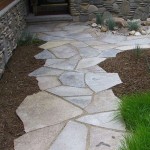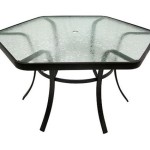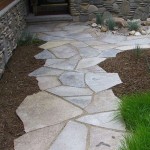How To Build A Stone Patio With Fire Pit
Constructing a stone patio with a fire pit elevates outdoor living spaces, providing an area for relaxation, entertainment, and warmth. This project, while demanding, yields a substantial return in terms of aesthetic appeal and functional value. Careful planning, proper material selection, and adherence to construction best practices are crucial for a successful outcome. This guide will outline the key steps involved in building a durable and visually appealing stone patio with an integrated fire pit.
Planning and Preparation
The initial phase of the project focuses on meticulous planning and preparation. This includes determining the patio's size and shape, selecting appropriate materials, and accounting for site conditions. Rushing this stage can lead to unforeseen challenges and potentially compromise the structural integrity of the patio.
Design and Layout: The size of the patio should be proportionate to the available space and intended use. Consider the number of people who will typically use the area and the furniture that will be placed on the patio. Sketching a detailed plan, including the fire pit's location and dimensions, is essential. The plan should also account for drainage, ensuring water flows away from the house and the patio itself. Consult local building codes and regulations regarding fire pit placement and safety requirements before finalizing the design.
Material Selection: Choosing the right materials is crucial for both aesthetics and durability. Common patio stone options include flagstone, pavers, brick, and concrete. Flagstone offers a natural, irregular look, while pavers provide a more uniform and structured appearance. Consider the climate and expected foot traffic when selecting the stone. For the fire pit, fire-resistant materials such as fire brick or concrete blocks specifically designed for fire pits are necessary. The fire pit's design should also complement the overall aesthetic of the patio.
Site Preparation: Proper site preparation is paramount for a stable and long-lasting patio. This involves removing any existing vegetation, topsoil, and debris from the area. Excavate to a depth that allows for the base materials (gravel and sand) plus the thickness of the paving stones. The depth should also accommodate any leveling required to ensure proper drainage. Accurate measurements are critical to avoid issues later in the construction process. Ensure a slight slope (approximately 1/4 inch per foot) away from the house to facilitate water runoff.
Tools and Equipment: Assemble all necessary tools and equipment before commencing the project. This includes a shovel, rake, tamper, level, measuring tape, wheelbarrow, safety glasses, work gloves, a circular saw or masonry saw for cutting stones, and a rubber mallet for setting stones in place. For the fire pit construction, you will need a trowel, mortar mix, and potentially a concrete mixer, depending on the size and type of fire pit being built.
Patio Base Construction
Creating a solid and well-drained base is essential for preventing settling, cracking, and weed growth. A properly constructed base provides a stable foundation for the stone patio, ensuring its longevity.
Gravel Layer: Spread a layer of compacted gravel (typically 4-6 inches thick) over the excavated area. This layer provides structural support and facilitates drainage. Use a tamper to compact the gravel thoroughly. This process creates a firm, stable base that will prevent the patio from shifting or sinking over time. Ensuring the gravel is evenly distributed and well-compacted is a critical step in the process.
Sand Layer: A layer of leveling sand (approximately 1-2 inches thick) is placed on top of the compacted gravel. This layer provides a smooth, even surface for setting the paving stones. Use a rake to distribute the sand evenly and a level to ensure a consistent slope for drainage. Water the sand lightly and compact it with a tamper. This will help to stabilize the sand and create a firm base for laying the stones.
Edge Restraints: Install edge restraints around the perimeter of the patio to prevent the paving stones from shifting or spreading over time. These restraints can be made of plastic, metal, or concrete and should be secured firmly into the ground. Edge restraints provide a crucial barrier that helps to maintain the patio's shape and integrity. The type of edge restraint chosen should be compatible with the type of paving stones used and the overall aesthetic of the patio.
Stone Installation
Laying the paving stones requires careful attention to detail to ensure a visually appealing and structurally sound surface. The pattern, spacing, and leveling of the stones all contribute to the overall quality of the patio.
Stone Placement: Begin laying the paving stones according to the planned design. Use a consistent spacing between the stones, typically around 1/4 to 1/2 inch. Use spacers to maintain uniform gaps. For irregular stones like flagstone, arrange the stones in a visually pleasing pattern, minimizing large gaps and awkward shapes. Staggering the joints between rows of stones will enhance the patio's structural integrity. A dry fit of the stones before final placement can help to ensure a satisfactory arrangement.
Leveling and Setting: Use a level to ensure that each stone is properly leveled. Adjust the sand beneath the stone as needed to achieve a level surface. Use a rubber mallet to gently tap the stone into place, embedding it firmly in the sand. Continuously check the level and adjust as necessary. Proper leveling not only enhances the patio's appearance but also prevents tripping hazards. Pay particular attention to the stones around the fire pit, ensuring they are securely set and level with the surrounding patio surface.
Cutting Stones: Inevitably, some stones will need to be cut to fit the edges of the patio or around the fire pit. Use a circular saw or masonry saw equipped with a diamond blade to cut the stones. Always wear safety glasses and a dust mask when cutting stones. Make accurate measurements and precise cuts to ensure a clean, professional finish. Cutting stones safely and accurately is crucial for achieving a well-defined and aesthetically pleasing patio edge.
Joint Filling: Once all the stones are laid and leveled, fill the joints between the stones with polymeric sand or stone dust. Polymeric sand hardens when wet, providing a more durable and weed-resistant joint. Sweep the sand into the joints and compact it using a brush or broom. Water the sand lightly to activate the hardening process. This step is vital for preventing weeds from growing between the stones and maintaining the patio's stability over time.
Fire Pit Construction
Building the fire pit requires careful attention to fire safety and structural integrity. The fire pit's design and construction should meet local building codes and regulations.
Foundation: Construct a solid foundation for the fire pit using compacted gravel and a concrete slab. The size of the foundation should be slightly larger than the base of the fire pit. This foundation will provide a stable base and prevent the fire pit from settling or shifting over time. Proper compaction of the gravel and curing of the concrete slab are essential for a durable foundation.
Wall Construction: Build the walls of the fire pit using fire brick or concrete blocks designed for fire pits. Use mortar to bond the blocks together, ensuring tight, even joints. Stagger the joints between rows of blocks to enhance structural stability. Follow the manufacturer's instructions for mixing and applying the mortar. The height of the fire pit walls should be adequate to contain the fire and prevent embers from escaping.
Fire Pit Liner: Consider installing a metal fire pit liner inside the fire pit to protect the walls from direct heat exposure. A liner will extend the lifespan of the fire pit and reduce the risk of cracking or damage to the masonry. Ensure the liner fits snugly inside the fire pit and is properly secured.
Drainage: Provide drainage at the bottom of the fire pit to prevent water from accumulating. This can be achieved by adding a layer of gravel at the bottom of the fire pit or by creating a small drain hole. Proper drainage is essential for preventing water damage and prolonging the life of the fire pit.
Safety Considerations: Adhere to all local building codes and regulations regarding fire pit placement and safety requirements. Ensure the fire pit is located a safe distance from any flammable materials, such as trees, fences, or buildings. Keep a fire extinguisher or water hose nearby when using the fire pit. Never leave a fire unattended. A spark arrestor screen can help prevent embers from escaping and potentially causing a fire.
Finishing Touches: Once the fire pit and patio are complete, add finishing touches such as outdoor furniture, lighting, and landscaping to create a welcoming and enjoyable outdoor living space. Consider adding decorative stones or gravel around the base of the fire pit to enhance its aesthetic appeal. Regular maintenance, such as cleaning the patio and inspecting the fire pit for damage, will help to ensure its longevity and continued enjoyment.

How To Build A Diy Paver Patio With Firepit

Diy Patio With Grass Between Pavers And A Fire Pit

How To Build A Stone Fire Pit Premier Landscape

How To Build An Easy Backyard Fire Pit

My 4 Day Fire Pit Patio Build Full Diy Project

Can You Build A Fire Pit On Top Of Pavers Sequoia Stonescapes

Diy Brick Patio Walkway Fire Pit Handy Father Llc

How To Diy A Fire Pit Pea Stone Patio Start Finish Shine Your Light

Installing A Paver Patio And Fire Pit From The Ground Up Home Depot

How To Build A Diy Stone Fire Pit Fixthisbuildthat
Related Posts








